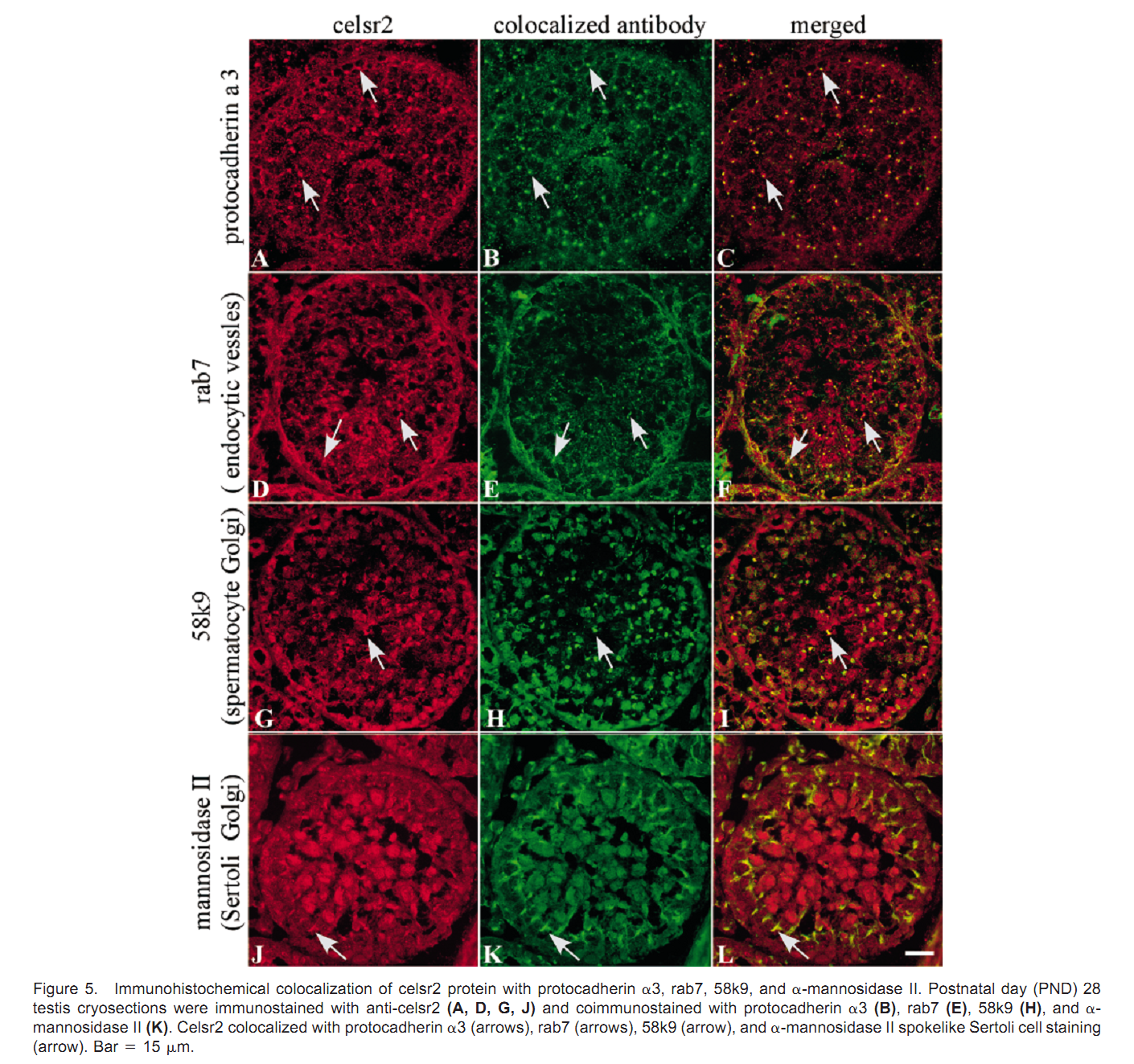| Tag | Content | |||||||||||||||||||||
|---|---|---|---|---|---|---|---|---|---|---|---|---|---|---|---|---|---|---|---|---|---|---|
SG ID |
SG00002032 |
|||||||||||||||||||||
UniProt Accession |
||||||||||||||||||||||
Theoretical PI |
5.26
|
|||||||||||||||||||||
Molecular Weight |
317122 Da
|
|||||||||||||||||||||
Genbank Nucleotide ID |
||||||||||||||||||||||
Genbank Protein ID |
||||||||||||||||||||||
Gene Name |
Celsr2 |
|||||||||||||||||||||
Gene Synonyms/Alias |
ORFNames=rCG_28504 |
|||||||||||||||||||||
Protein Name |
||||||||||||||||||||||
Protein Synonyms/Alias |
SubName: Cadherin EGF LAG seven-pass G-type receptor 2SubName: RCG28504 |
|||||||||||||||||||||
Organism |
Rattus norvegicus (Rat) |
|||||||||||||||||||||
NCBI Taxonomy ID |
10116 |
|||||||||||||||||||||
Chromosome Location |
|
|||||||||||||||||||||
Function in Stage |
||||||||||||||||||||||
Function in Cell Type |
||||||||||||||||||||||
Description |
Temporarily unavailable |
|||||||||||||||||||||
The information of related literatures |
1. S. A. Beall, K. Boekelheide and K. J. Johnson (2005) Hybrid GPCR/cadherin (Celsr) proteins in rat testis are expressed with cell type specificity and exhibit differential Sertoli cell-germ cell adhesion activity. J Androl 26(4): 529-38. Abstract Spermatogenesis requires Sertoli cell-germ cell adhesion for germ cell survival and maturation. Cadherins are a diverse superfamily of adhesion proteins; structurally unique members of this superfamily (celsr cadherins) are hybrid molecules containing extracellular cadherin repeats connected to a G protein-coupled receptor transmembrane motif. Here we demonstrate postnatal testicular mRNA expression of the 3 celsr paralogs (celsr1, celsr2, and celsr3), protein localization of celsr2 and celsr3, and functional analysis of celsr2 adhesion activity in primary Sertoli cell-germ cell co-cultures. Evaluation of celsr mRNA levels during a postnatal time course indicated that celsr1 and celsr2 were Sertoli cell and/or early-stage germ cell products, whereas celsr3 was expressed in later-stage germ cells. Cell type-specific expression was verified using the Sertoli cell line 93RS2, where celsr1 and celsr2 mRNA, but not celsr3, were detected. Immunostaining of testicular cryosections resulted in celsr2 protein localization to a spokelike pattern in the basal seminiferous epithelium and punctate figures in the apical epithelium, consistent with both Sertoli cell and germ cell expression. Celsr3 localized to punctate structures in the adluminal epithelium from postnatal day 40, consistent with elongate spermatid expression. The subcellular localization of celsr2 was examined further to define its localization in Sertoli cells and germ cells. Celsr2 localized to the Golgi complex in Sertoli cells and germ cells. In addition, germ cell celsr2 localized to a rab7-positive structure, which may be an endocytic compartment. Neither celsr2 nor celsr3 immunostaining was present at classic cadherin-based adhesion junctions. Nonetheless, the addition of a recombinant celsr2 protein fragment consisting of extracellular cadherin domains 4 through 8 to Sertoli cell-germ cell co-cultures resulted in germ cell detachment from Sertoli cells. Collectively, these data indicate that celsr cadherins have a cell type-specific expression pattern, and celsr2 may mediate Sertoli cell-germ cell adhesion outside of classic cadherin-based adhesion junctions. PMID: [15955893] Back to Top |
|||||||||||||||||||||
Figures for illustrating the function of this protein/gene |
|
|||||||||||||||||||||
Function |
||||||||||||||||||||||
Subcellular Location |
Cell membrane; Multi-pass membrane protein(By similarity). |
|||||||||||||||||||||
Tissue Specificity |
||||||||||||||||||||||
Gene Ontology |
|
|||||||||||||||||||||
Interpro |
IPR002126; Cadherin. IPR015919; Cadherin-like. IPR020894; Cadherin_CS. IPR008985; ConA-like_lec_gl. IPR013320; ConA-like_subgrp. IPR022624; DUF3497. IPR000742; EG-like_dom. IPR006210; EGF-like. IPR001881; EGF-like_Ca-bd. IPR013032; EGF-like_CS. IPR006209; EGF-like_dom. IPR000152; EGF-type_Asp/Asn_hydroxyl_site. IPR002049; EGF_laminin. IPR017981; GPCR_2-like. IPR001879; GPCR_2_extracellular_dom. IPR000832; GPCR_2_secretin-like. IPR000203; GPS_dom. IPR001791; Laminin_G. IPR001368; TNFR/NGFR_Cys_rich_reg. Back to Top |
|||||||||||||||||||||
Pfam |
||||||||||||||||||||||
SMART |
||||||||||||||||||||||
PROSITE |
||||||||||||||||||||||
PRINTS |
||||||||||||||||||||||
Created Date |
18-Oct-2012 |
|||||||||||||||||||||
Record Type |
Experiment identified |
|||||||||||||||||||||
Protein sequence Annotation |
||||||||||||||||||||||
Nucleotide Sequence |
Length: bp Go to nucleotide: FASTA |
|||||||||||||||||||||
Protein Sequence |
Length: 2919 bp Go to amino acid: FASTA |
|||||||||||||||||||||
The verified Protein-Protein interaction information |
| |||||||||||||||||||||
Other Protein-Protein interaction resources |
String database |
|||||||||||||||||||||
View Microarray data |
Temporarily unavailable |
|||||||||||||||||||||
Comments |
||||||||||||||||||||||

